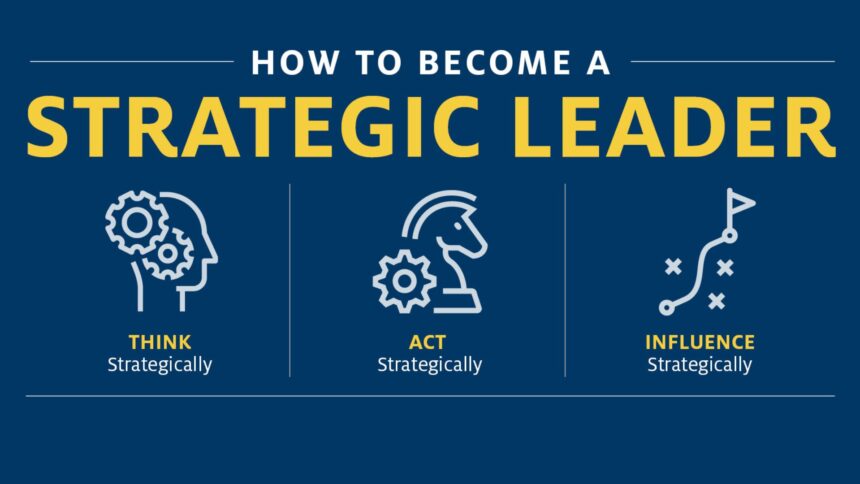In many Indian companies, the idea of strategic leadership is talked about often; boardroom discussions on market differentiation, competitive advantage, and growth strategy are commonplace. But when it comes to execution, there’s a glaring gap. Department leaders are expected to deliver results, yet few are trained in real strategic leadership. They focus on meeting KPIs and optimizing operations rather than creating something distinct, meaningful, and aligned with the company’s bigger picture.
The Strategic Blind Spot
The assumption that managers inherently know how to practice strategic leadership is a costly one. Strategy is not just setting targets or managing budgets; it’s about making intentional choices: where to play, how to win, and what to sacrifice. Without training in strategic leadership, department heads often default to operational thinking: making things smoother, faster, cheaper. That may improve operations, but it won’t create differentiation.
Because of this, many Indian organizations find themselves stuck in the same place: incrementally better, but not markedly distinct. Their departmental leaders become efficient, but not strategic. That leads to duplication, copied best practices, and a lack of competitive edge.
The Copy-cat Problem
When there is no real focus on strategic leadership, managers often copy what appears to work elsewhere. They adopt best practices, replicate competitor models, or follow last year’s plan. While this seems safe, it undermines the opportunity to stand out. For example, marketing teams may echo rivals, HR may roll out standard engagement programs, and operations may pick mainstream technology solutions. This approach reduces originality and makes the business indistinguishable.
In the Indian business ecosystem, with numerous small, medium, and large enterprises, the risk of blend-in is high. When all companies look alike in strategy, price, and service, growth becomes harder. Strategic leadership means leading with difference, not just doing the same things better.
How to Fix it: 5 Actionable Steps
1. Teach Strategic Thinking
If your company values strategic leadership, invest in training that goes beyond basic management. Equip leaders with tools to analyze market shifts, recognize gaps, and think about positioning. Encourage them to ask: “What is our unique play?” rather than simply “How do we optimize this?” Workshops, group problem-solving, and real business simulations all help build strategic leadership capabilities.
2. Encourage Smart Risk-Taking
True strategic leadership comes from experimenting, not just following norms. Business units should be allowed to test new ideas, even if they don’t always succeed. Create a culture where attempts are rewarded, and failure is treated as learning. That mindset shift elevates leadership from manager to strategist.
3. Align Strategy Across Departments
Often in Indian firms, departments operate in silos. Without cross-alignment, even the best ideas fail. Strategic leadership demands that each department understand the company’s overarching goal and collaborate. For example, marketing, operations, and HR must work together on strategic initiatives rather than independent targets. Promote joint strategy sessions and shared goals.
4. Push Beyond Best Practices
Best practices are useful, but only as a starting point. True strategic leadership means questioning the norm, rethinking assumptions, and creating site-specific solutions. Encourage department leaders to ask: “Why are we doing this this way? Is there a better path for our business?” When leaders think independently, they create competitive advantage.
5. Move from Execution to Strategy
Many departments are execution-driven: deliver projects, meet targets, respond to directives. But execution alone is not strategic. Strategic leadership means shifting the mindset: from “How do I deliver this efficiently?” to “How do I make this unique and aligned with our vision?” Review roles, KPIs and expectations with this perspective. Give leaders time and space to think, not just report.
Why Strategic Leadership Builds Sustainable Business
In Indian entrepreneurship and corporate growth alike, sustainable advantage doesn’t come from copying what others did, it comes from creating what others can’t easily copy. That’s the power of strategic leadership. When your leaders act strategically, you get:
- Differentiated business models
- Engaged teams that believe in direction
- Innovated products or services, not just incremental updates
- A unified culture behind a clear vision
Without strategic leadership, you’ll keep improving, but you won’t stand out. Standing out is what gets you remembered, recommended and repeated.
Conclusion
If you want your business to lead rather than follow, focus on building strategic leadership. Train your department heads, align strategy across the organization, reward risk, and encourage original thinking. Don’t settle for operational excellence alone. Because without strategic leadership, your business may run well, but it won’t soar.
Image Credits: Center of Creative Leadership
🔗 For more articles on startup growth, fundraising strategies, and business insights for Indian founders, visit: Udyamee India Magazine








